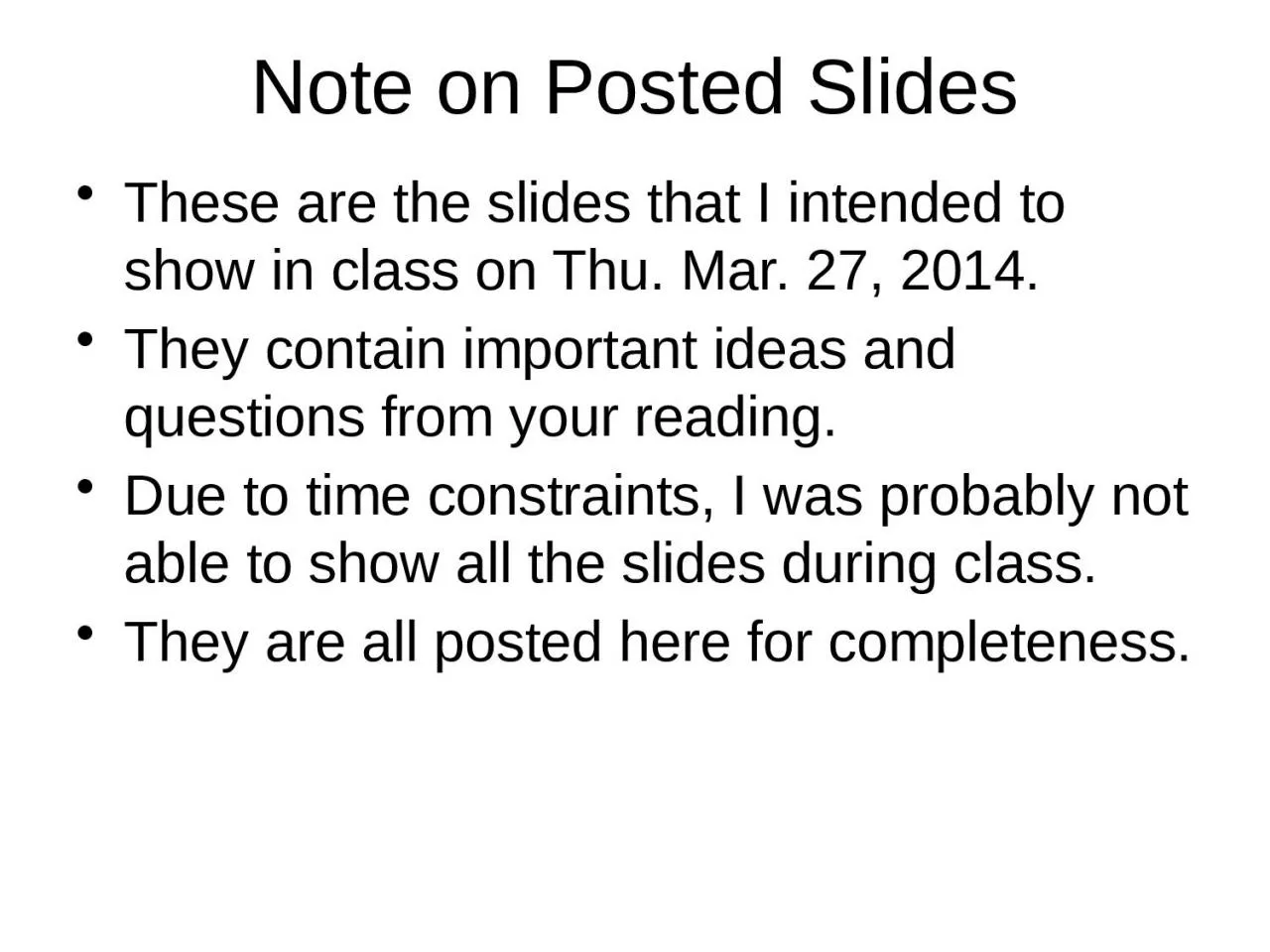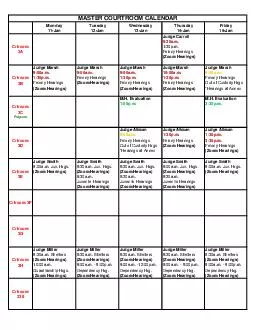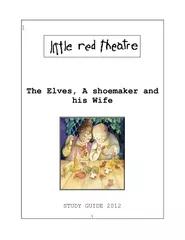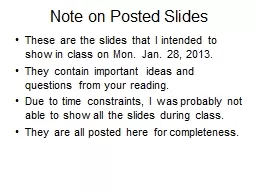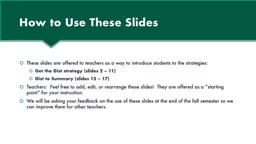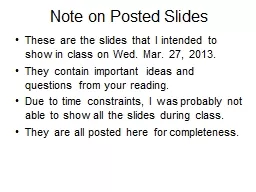PPT-Note on Posted Slides These are the slides that I intended to show in class on Thu. Mar.
Author : zoe | Published Date : 2024-03-15
They contain important ideas and questions from your reading Due to time constraints I was probably not able to show all the slides during class T hey are all
Presentation Embed Code
Download Presentation
Download Presentation The PPT/PDF document "Note on Posted Slides These are the slid..." is the property of its rightful owner. Permission is granted to download and print the materials on this website for personal, non-commercial use only, and to display it on your personal computer provided you do not modify the materials and that you retain all copyright notices contained in the materials. By downloading content from our website, you accept the terms of this agreement.
Note on Posted Slides These are the slides that I intended to show in class on Thu. Mar.: Transcript
Download Rules Of Document
"Note on Posted Slides These are the slides that I intended to show in class on Thu. Mar."The content belongs to its owner. You may download and print it for personal use, without modification, and keep all copyright notices. By downloading, you agree to these terms.
Related Documents

